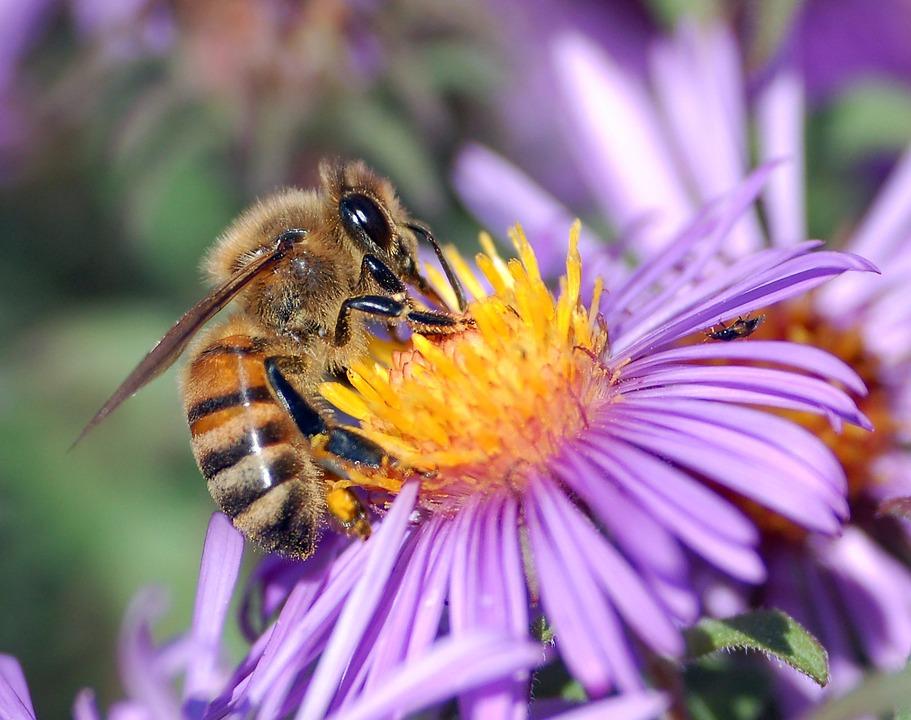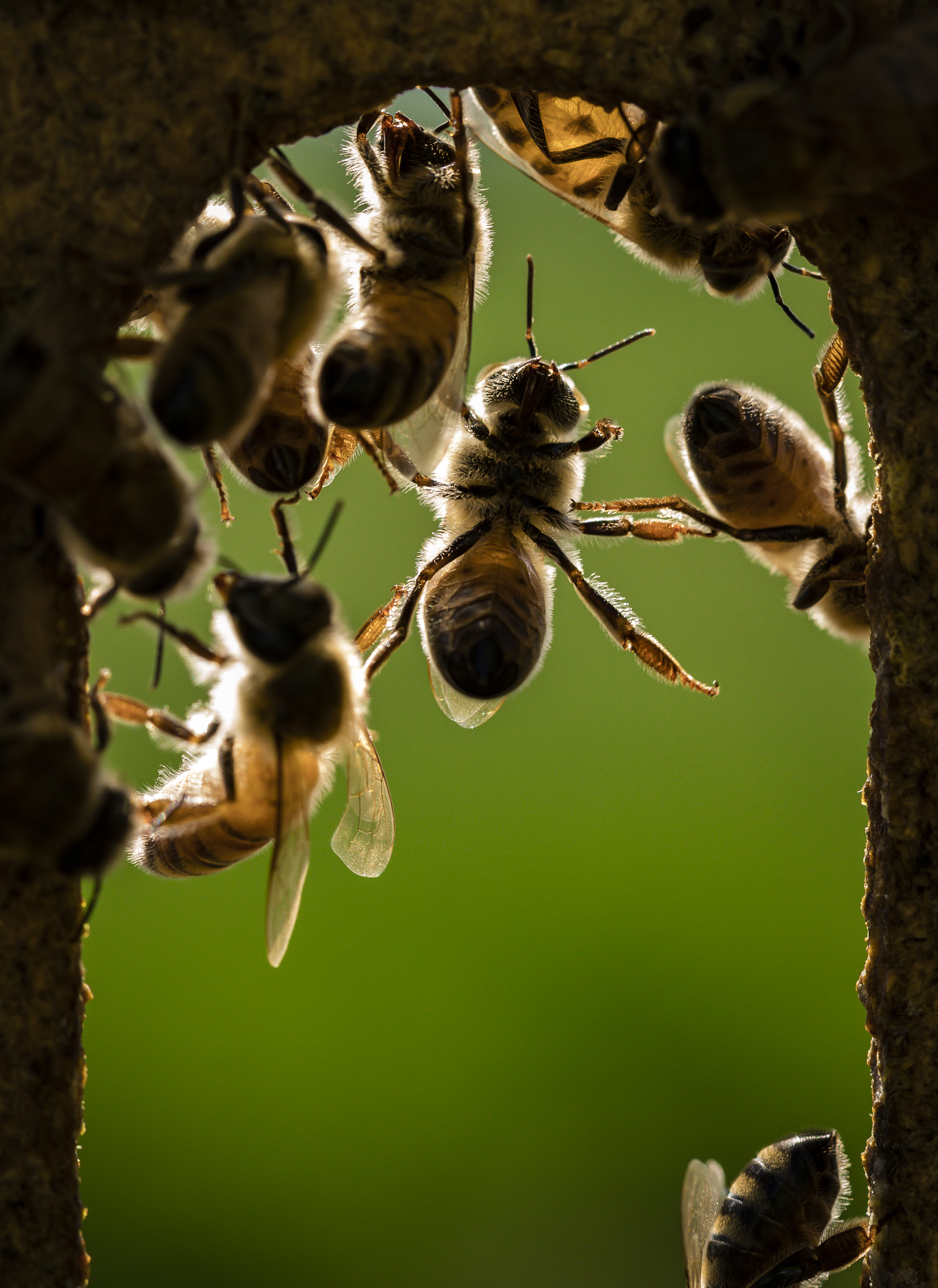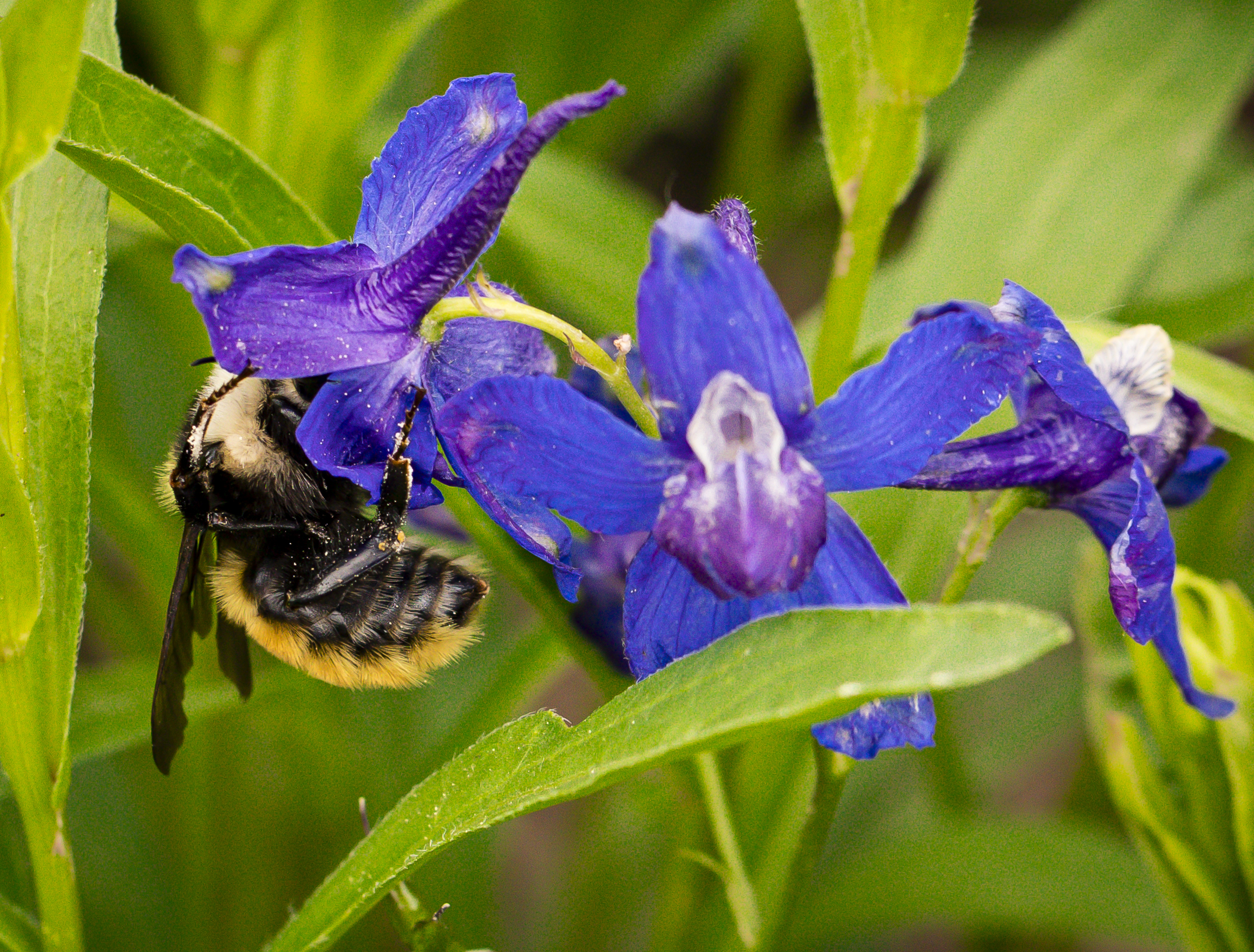Honey Bees: An Essential Part of Colorado's Ecosystem
Colorado no longer offers inspections or export certifications for apiarists shipping bees to states requiring such certificates.
The Colorado Bee and Bee Products Act, originally adopted in 1963, initially focused on statewide beehive inspections to prevent the spread of bee diseases and mandated the destruction of diseased hives. This program shifted from state funding to self-funding via registration/licensing fees in the mid-1980s.
Routine inspections were discontinued in 1987 due to advocacy for decreased registration fees, leading to a significant drop in licensed beekeepers. Since the elimination of registration fees in 1990, the program has been unfunded.

National Honey Bee Survey (NHBS)
 About the NHBS
About the NHBS
The National Honey Bee Survey (NHBS) is a volunteer-based survey conducted across the state to test honey bee hives for various factors that can negatively affect honey bee health.
Participation in the survey is voluntary. You are eligible if you have at least 10 bee colonies (8 of which will be sampled, with 2 extra for potential deadouts or queenless colonies).
As a participant, you receive a report detailing your honey bees’ pests, pathogens, and disease results, with comparisons to national averages.
It’s a free service and your information contributes to a growing database supporting ongoing research to understand honey bee health in the U.S.
You can see the data from previous years of the NHBS here.
To join the National Honey Bee Survey, please email Aja Bos, CDA's Cooperative Agricultural Pest Survey Program Manager.
Photo by Shelli Quattlebaum
What do we test for?
The survey monitors for invasive threats, documents honey bee pests, pathogens, and in-hive pesticides, and conducts a longitudinal study to identify how beekeeping events affect honey bee health and hive mortality. Specific tests include:
- American foulbrood
- European foulbrood
- Sacbrood
- Chalkbrood
- Parasitic mite syndrome
- Deformed wing virus
- Black shiny bees
- Small hive beetle
- Wax moth
Is this the same as inspections?
No. The NHBS is distinct from hive registration and inspection as it has no enforcement or regulatory aspects. While the survey identifies diseased hives, subsequent actions are at the apiarist's discretion.
Honey Bee Best Practices
Beekeeping is an ancient form of animal husbandry that requires a deep understanding of environmental and seasonal cycles, as well as honey bee biology and behavior.
Responsible beekeeping involves selecting suitable hive locations and implementing effective management practices throughout the year.
Hive Monitoring
Successful beekeeping is proactive. Hives should be assessed every three weeks, or at least once a month. Colony activity varies throughout the year due to weather, time of day, precipitation, and temperature fluctuations. Regular assessments help beekeepers develop environmental awareness of the conditions impacting their hives.
CSU Extension is an excellent source of information on beekeeping based on an Integrated Hive Management approach. They also offer courses with in-depth beekeeping training.
Integrated Hive Management (IHM) Intervention Strategies
Integrated Hive Management (IHM) offers an organized approach to pest management, aiming to support healthy colonies while reducing chemical use. IHM encourages evaluating each management decision based on its impact on bee health, drawing on various strategies to achieve pest management goals in the least invasive manner.
When chemicals are necessary, IHM emphasizes their proper application to minimize residues in honey and combs and prevent pest resistance. IHM programs are flexible and can be customized to suit different beekeeping operations.
Cooperation for Pollinator Protection
CO Drift Watch, Bee Check, and Hive Watch are volunteer-based resources that facilitate cooperation between pesticide applicators and beekeepers. This cooperation is crucial for protecting bees, other pollinators, hives, and habitats from harmful pesticides.
BeeCheck allows users to contact applicators to inform them about nearby hives before pesticide application.

Photo by Shelli Quattlebaum
Pollinator Protection
There are hundreds of species of native bees in Colorado as well as several thousand hives of the honey bee (Apis mellifera) managed commercially and by hobby beekeepers across the state. All of these species, as well as butterflies, moths, flies, hummingbirds and others, are important pollinators of native and non-native crop and landscape plants.
All pollinators are facing threats from complex interacting factors. Managed honey bees (Apis mellifera) are facing threats from increased disease and mite parasites, lack of genetic diversity, habitat loss due to the expansion of urban landscapes and crop monoculture, and environmental toxins including pesticides.
CDA supports the use of integrated hive management to promote proper hive hygiene, mite and disease management, regulates the proper use of pesticides and promotes improved habitat for all pollinators.
Providing habitat for pollinators
Urbanization, loss of undisturbed natural areas and crop monocultures are partially to blame for the crisis facing pollinators. A landscape that is made up predominately of turfgrass and non-flowering plants does not provide pollinators with food and forage.
Utilizing the urban landscape to help solve the pollinator crisis is one of the most powerful ways that individuals can make a difference.
How You Can Help
Pollinators and native bees are crucial for plant growth. By protecting pollinators, we protect our crops.
Support native pollinators by providing habitat and forage. A landscape made up of a variety of plants with a large number of flowering shrubs, trees, annual and perennial flowers provides a diversity of food and forage for pollinators of all types and sizes.
- Consider planting a pollinator garden
- How you can help pollinators (US Fish & Wildlife Service)
- North American Pollinator Protection Campaign
More informational resources
- An Overview of the Potential Impacts of Honey Bees to Native Bees, Plant Communities, and Ecosystems in Wild Landscapes (Xerces Society for invertebrate Conservation)
- Native Pollinating Insects Health Study (Colorado Department of Natural Resources)
- Pollinators (USDA)
- Detailed honey bee survey Frequently Asked Questions (PDF from USDA)